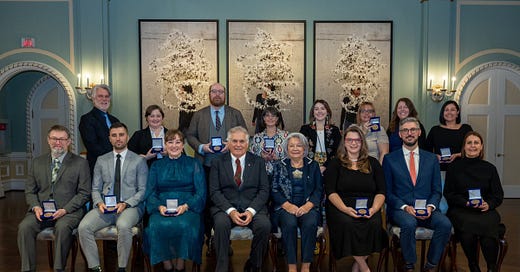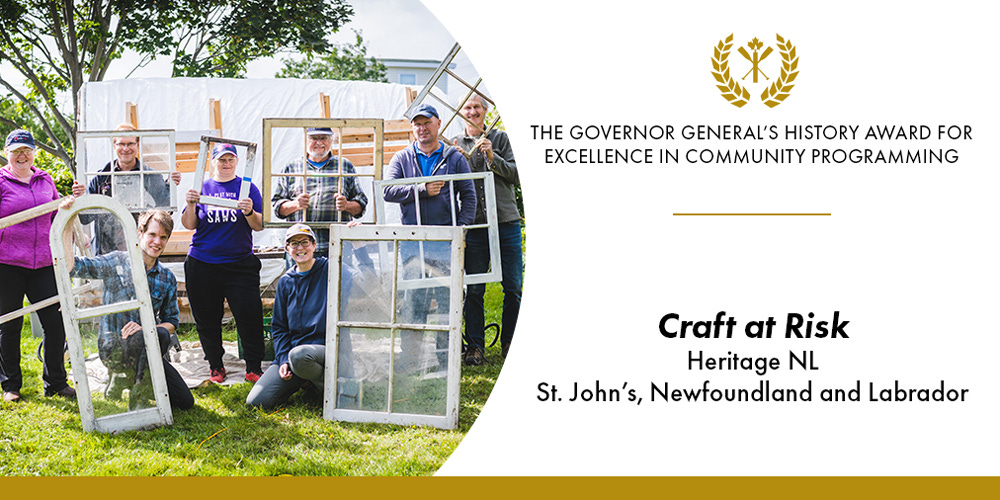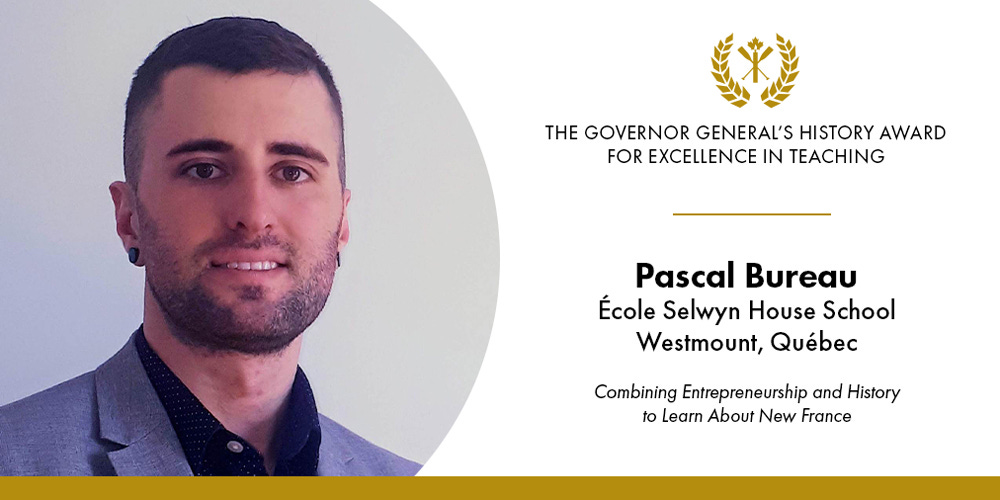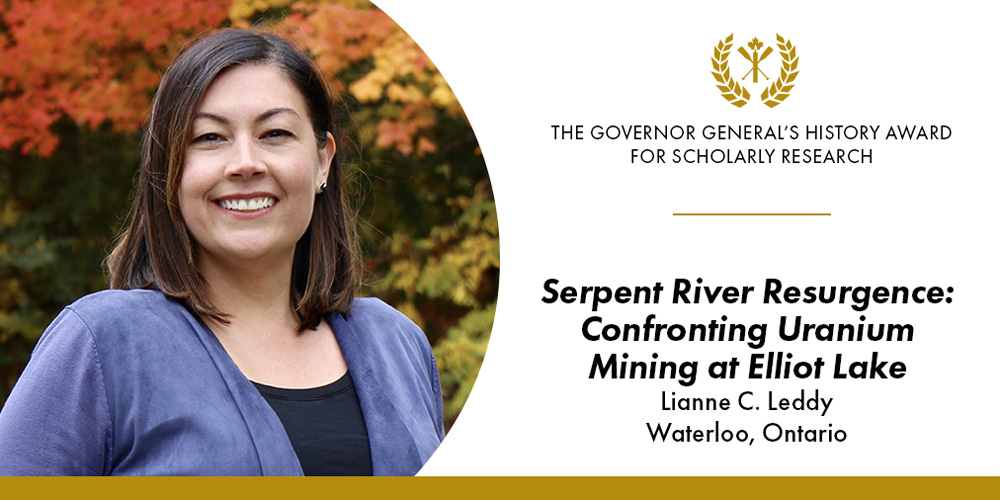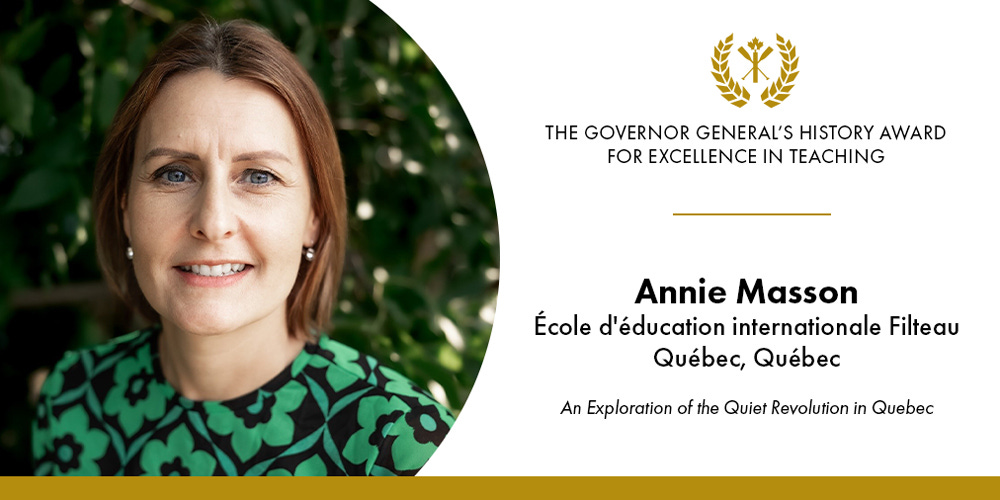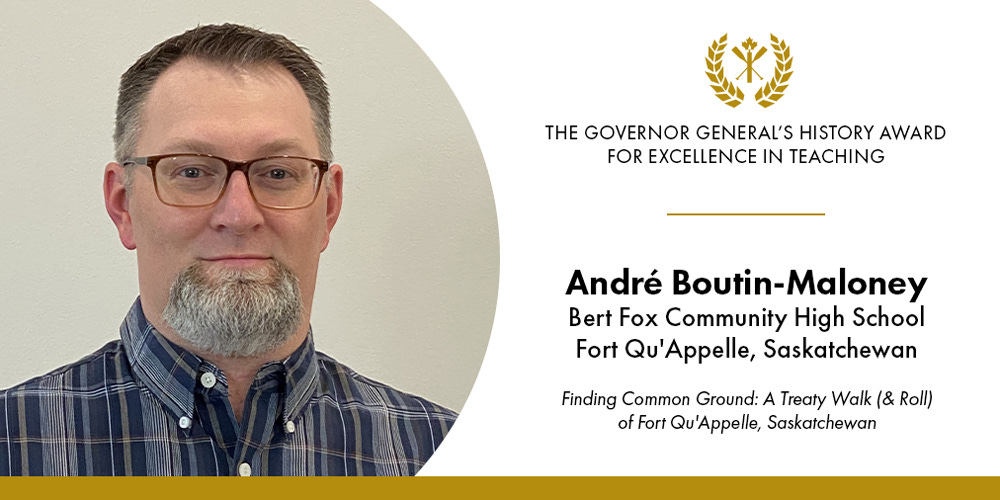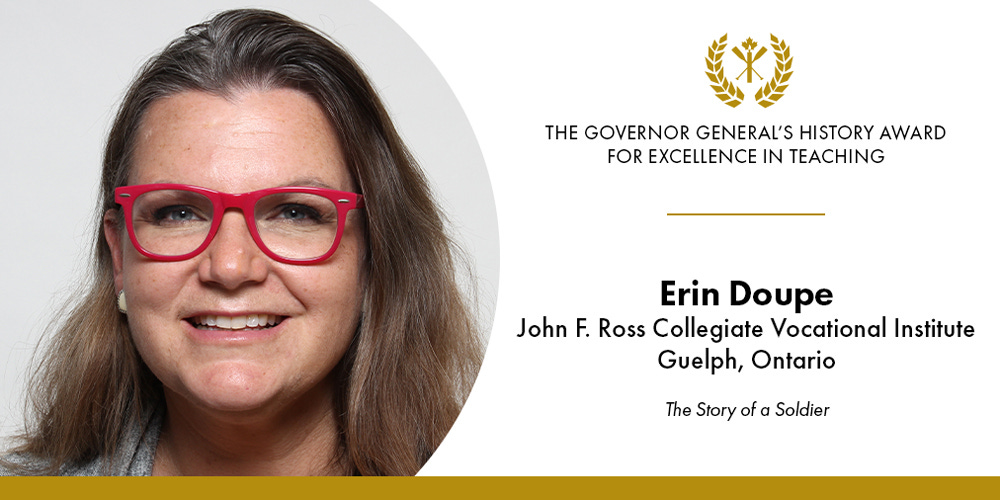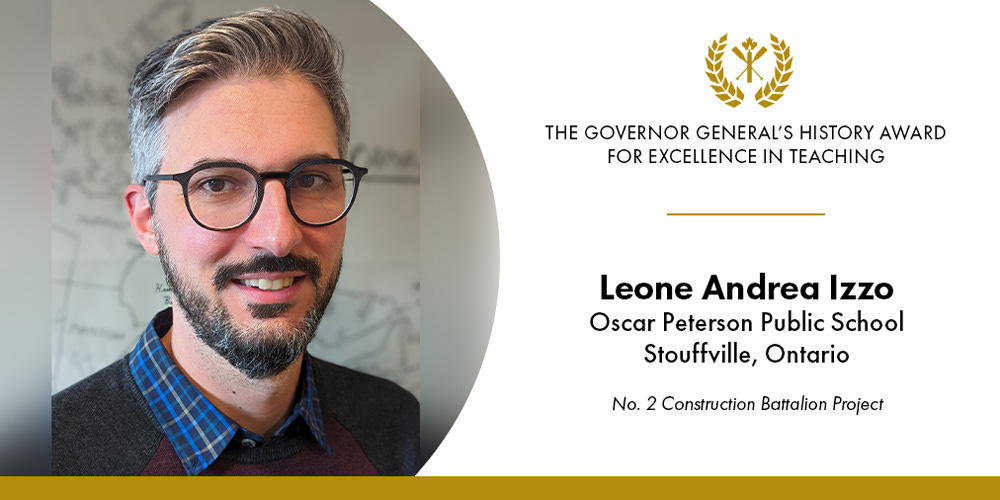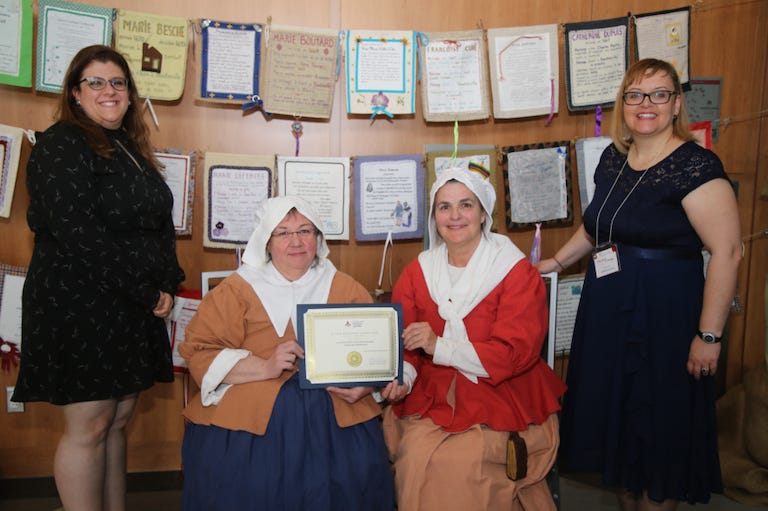The Incredible Projects That Won This Year's Governor General's History Awards
Board games, books, digital tours, museums, and more...
So, I’ve, uh, won a pretty big award! The Governor General’s History Award for Popular Media — The Pierre Berton Award — has been presented to an awe-inspiring list of recipients in the past, including Pierre Berton, Thomas King, Charlotte Gray, Murray Sinclair, Canada: A People’s History, the Dictionary of Canadian Biography, Tim Cook, Lawrence Hill, Paul Gross… and now, somehow, me.
It’s been a whirlwind, so my apologies for the newsletter going silent over the last couple of weeks. I recently headed to Ottawa to spend a few days with the other recipients of this year’s awards and meeting those extraordinary teachers and historians — so passionate, caring and innovative — has been one of the great privileges of my life. So before we return to a regular posting schedule, I wanted to share their work with you.
Below, you’ll find the citations each received. And if you’d like to know more about their work, you’ll find it on the Canada’s History website here.
Saving Traditional Crafts From Extinction in Newfoundland & Labrador
Craft at Risk was an ambitious project to research, assess, and address the loss of traditional knowledge and craft in Newfoundland and Labrador.
Through more than sixty-five training events throughout the province, the project team worked with community members and craftspeople to deliver interactive, introductory workshops on historic skills. Heritage NL also offered an immersive apprenticeship program, where participants worked with a skilled mentor to learn a craft that was listed as endangered or critically endangered.
The project team documented all of the activities with photographs, videos, and oral history interviews. This material is now publicly available through a digital archive and is being shared widely through social media channels. In total, the initiative has helped preserve more than twenty crafts, from bark tanning to komatik (sled) making to letterpress printing, revitalizing a wide range of traditions and skills.
Craft at Risk engaged more than 1,000 participants in fifty communities with the rich, cultural traditions of Newfoundland and Labrador. It serves as a model of intergenerational learning and for safeguarding cultural knowledge and skills for future generations.
Making Board Games About New France
Pascal Bureau challenged his grade 9 students to design educational and entertaining board games centred around major themes in the history of New France.
In the first phase of the project, teams of students chose one of the major curricular themes associated with this period of history and carried out extensive research based on primary and secondary sources. Mercantilism, colonization, exploration, the fur trade, and the evangelization of First Nations people were some of the topics explored.
For the second stage of the project, students had to imagine and design a real, marketable board game based on the major theme they had explored. With the advice of authors and professional game designers, students were able to develop a plan, design sketches, create prototypes, and finally manufacture a game board similar to those found in stores. Throughout this process, they learned to use different types of software, as well as common production tools used by artists and designers in the gaming industry.
In the final phase of the project, the student teams were invited to present and test their product at a series of community events, as well as at special sessions organized for primary school students at Selwyn House. Finally, the best games were submitted to a major competition organized by a Quebec game authors' cooperative, an event that brought together competitors of all ages and backgrounds.
With his project combining entrepreneurship and the study of the history of New France, Bureau succeeded in creating an authentic and immersive learning experience for his students.
Confronting Uranium Mining in Ontario
Serpent River Resurgence opens with the stories of the lands and waters of Anishinaabek territory, of the great serpent, her radiant eggs, and the lessons to be learned from disturbing them in unsustainable and disrespectful ways.
Drawing expertly on diverse sources of historical knowledge, Lianne C. Leddy shares these lessons with readers, detailing the history of the exploitation of uranium deposits (“radiant eggs”) at Elliot Lake and its impact on Serpent River First Nation, of which she is a member. In doing so, Leddy confronts historical narratives that present the postwar period as a time of prosperity, growth, and development. As she demonstrates, “Cold War Colonialism resulted in land encroachment and pollution that compromised, with devastating consequences, Anishinaabek stewardship of lands and waterways.” Leddy also unsettles the idea that colonial relationships lessen over time; rather they are made and remade in different contexts.
As the title suggests, readers also learn about the various ways that Serpent River First Nation resisted encroachment on the land. These efforts were led by Anishinaabe kwewag (women) like Leddy’s grandmother, Gertrude Lewis, as well as other community leaders. They articulated their concerns to government officials and to the public, forcing them to acknowledge and redress the effects of uranium mining. Through their tireless commitment to stewardship of the lands and waterways, they found ways to disrupt colonial relationships and remind all those listening in a good way of the importance of respecting the great serpent and her radiant eggs.
Through extensive research and storytelling, Leddy’s work highlights the complex dynamics of Indigenous-settler relations while centring Indigenous worldviews and lived experiences. Serpent River Resurgence is a crucial contribution to the discourse on reconciliation and Indigenous history in Canada.
The Music of the Quiet Revolution
Annie Masson, a sixth-grade teacher, engaged her students in an exploration of the Quiet Revolution in Quebec. Through the analysis of songs and the examination of extensive documentary material, they collectively uncovered significant features of this era, establishing facts, drawing connections, and making comparisons to the different realities of society today.
To guide their research, Masson and her students aimed to answer the following question: Did the songs that were popular in Quebec at that time — from 1960 to 1980 — represent Quebec society? Students explored a body of primary and secondary sources, watched documentary films, and listened to and analyzed the lyrics of Quebec songs from this period. They were then able to come up with articulate and meaningful answers to an ambitious research question for twelve-year-olds. Their quest, carried out in a fun and playful learning environment, enabled them to better understand the history of this period, discover pivotal events and, above all, immerse themselves in elements specific to Quebec culture.
In the final phase of the project, students put their learning into practice, this time by observing the era in which they live. They reflected on the songs and performers that surround their daily lives, to see if the subjects and themes addressed in today's song lyrics reflect our society.
Through this project, Masson empowered her students to develop their historical thinking skills and fostered a greater connection to a rich part of Quebec culture that was previously unknown to them.
A Digital Treaty Walk in Saskatchewan
Finding Common Ground: A Treaty Walk (& Roll) of Fort Qu'Appelle, Saskatchewan is an innovative project that evolved into a digital, self-guided walk that explores local history through a Treaty lens. André Boutin-Maloney’s high school students conducted research, interviewed local Knowledge Keepers and Elders, and explored historic sites in their community. They selected significant locations and crafted their stories, making meaningful connections between place and history and filling in gaps in their narrative. The students then mapped out a route and created a multi-media tour using GIS (Geographic Information System) technology.
The project transformed the classroom and community into dynamic, interdisciplinary learning environments where students assumed various roles, including those of researchers, learners, teachers, historians, artists, and designers. The final product was shared back with the community through a brochure with a QR code link that students placed in the town’s visitor centre and provincial park office. Participants are invited to explore and learn about the community “with Treaty on the mind,” and leave feedback and reflections through an online survey form. Finding Common Ground is a powerful educational resource, providing a tangible space for dialogue, reflection, and education on the Treaty relationship in Canada. The project reflects André Boutin-Maloney’s commitment to student-centred learning and affecting positive change through education.
Connecting Students to the First World War
Three teachers were recognized for their work connecting students to the history of WWI:
Erin Doupe led her high-school students through a local history project called The Story of a Soldier, which centred on the experiences of Guelph’s soldiers and their families during the First World War.
The students worked closely with attestation records, diaries, historical newspapers and secondary sources to trace the life of their selected service person. They corroborated evidence and contextualized their soldier’s experience, providing local examples of broad patterns and trends of wartime Canada.
The students paid special attention to their soldier’s next-of-kin, gleaning from the evidence insight into the lives of those who remained on the home front. Their investigations challenged many myths that surround Canada’s wartime experience and led to complex conversations about memory and historical significance. In addition, they explored themes related to public health, housing and urban development, and social policies following the First World War.
The students transformed their research into narrative stories, which they mailed with a cover letter to their soldier’s last known address. This resulted in rich community connections, as homeowners responded to the letters with appreciation and, sometimes, more information on the soldier who once lived there. The students made important contributions to their community’s historical record, learning the value of preserving the past for future generations.
The Westmount High School Memorial Project was a decade-long endeavour to research and commemorate the lives of the school’s alumni who served and died during the Second World War.
Since 2014, Chantal Clabrough has guided her grade ten students through the process of conducting historical research, using school yearbooks, community-based, national and international archives, and digital resources. Students choose an individual soldier to research and piece together their life story, making connections to Canada’s broader wartime history. A final reflection assignment provided students with the opportunity to consider the impact and legacy of war on their soldiers, their families, and their community. Students have contributed more than 140 soldier biographies to the school’s memorial website. The completion of the project also coincided with the school’s 150th anniversary celebration as the oldest public English high school in Quebec.
In a world where history can sometimes feel distant, Chantal Clabrough bridged the gap for her students, empowering them to connect to the past in a profound way.
The No. 2 Construction Battalion Project delves into the history of the First World War with a specific focus on Canada’s first segregated unit. The goal was to shed light on an essential chapter in Canadian history marked by systemic racism and discrimination.
Through research using primary and secondary sources, artifacts, and guest speakers, Leone Andrea Izzo and his grade eight students uncovered the untold stories of individual soldiers in the army’s largest all-Black unit. Each student created a website in the style of a digital museum exhibit, complete with photographs, documents, written historical accounts, and an interactive map. This map allowed students to plot significant events in the soldiers’ lives, highlighting their birthplaces, training grounds, and deployment locations. During Remembrance Day, students transformed their classroom into a museum where they shared their projects with their school community.
The project was carried out with the support and collaboration of the York Region District School Board Museum & Archives, as well as historian Kathy Grant, providing students with mentorship and hands-on experience in researching, curating, and commemorating this important history. The project also responds to the York Region District School Board’s Anti-Black Racism Strategy by highlighting the experiences of Canada’s Black soldiers and their descendants, contributing to a more complete and inclusive history of our country’s wartime experience.
Celebrating Indigenous Art in Manitoba
This project began in 2022 with the goal of uncovering, researching, exhibiting, and celebrating pre-1900 Indigenous beadwork, embroidery, and quillwork held by museums throughout Manitoba.
The project team began by asking the museums to identify suitable artworks for further study. A team of Indigenous artists, historians, and Elders then researched the pieces, identifying traditional designs, motifs, techniques, and materials. Their insights breathed life into the historic pieces, adding context and connecting the works to specific communities, nations, and oral traditions.
The resulting exhibition featured items from eleven participating museums, alongside contemporary Indigenous work. Museum visitors received an opportunity to connect with the vibrant and enduring culture of Indigenous needle arts, while interactive workshops and virtual programming provided further opportunities for community members to engage with the exhibit. Finally, more than one hundred pieces that were included in, or considered for the exhibit, are now part of an online database, making the research available to communities throughout Canada.
The project transcended traditional museum boundaries. Visitors received close, uncurated encounters with the works, fostering informal learning and dialogue in a safe, welcoming environment. The project is an important step towards reconciliation, inclusion, and ongoing partnerships between museums and Indigenous peoples.
Spotlighting the History of Women in Québec
Mettre en lumière l'histoire des femmes is the brainchild of historians Vicki Onufriu and Marie-Josée Lettre, both members of the Comité Mémoire des femmes, a working group formed in 2021 by the Fédération Histoire Québec. This volunteer committee brings together a number of well-known Quebec researchers working in the fields of history, heritage, and genealogy. Together they combine their knowledge and expertise to document and publicize the history of women or groups of women who have made important contributions to Quebec.
To this end, since 2022, they have been making original use of social media to broadcast, free of charge, a weekly historical vignette. The women featured in the vignettes are outstanding figures who have left their mark on the arts, politics, health, the economy, and more. The committee is also highlighting the contributions of Indigenous and immigrant women, whose stories help provide a better understanding of Quebec society. Thanks to an innovative communications strategy, the committee has so far shared over 70 educational vignettes to the delight of an ever-growing audience.
Mettre en lumière l'histoire des femmes also includes a second component: the creation of the Prix Madeleine-Juneau in 2022 to reward and publicize projects developed in the field of women's history in Quebec. The prize was named in honour of a renowned museologist-archivist who devoted her life to transmitting women’s history and making it visible in the public sphere.
This original project piloted by the Comité Mémoire des femmes has made it possible to transmit new content, foster close cooperation between renowned Quebec researchers, and turn the spotlight on the lives of women too long forgotten.

